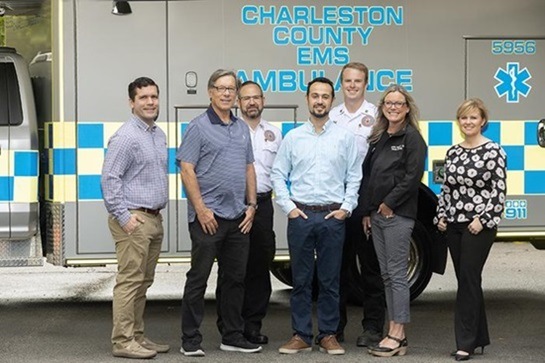
Researchers from the Medical University of South Carolina (MUSC) have partnered with US emergency medical services (EMS) to pilot test the first magnetic resonance imaging (MRI)-equipped ambulance in an effort to speed up stroke response. The researchers concluded a recently published report by stating that, “while MRI is not yet ready for clinical use in the MSU [mobile stroke unit] setting, our initial experience suggests potential technological feasibility of this approach following future technical and MRI sequence development”.
“The quicker that we can get the patient to treatment, the quicker we can have a good outcome,” said Dustin LeBlanc (MUSC, Charleston, USA). “But the big step in between—that is diagnostic studies.”
To accelerate diagnostic studies, a team of MUSC researchers including LeBlanc partnered with Charleston County EMS to equip an ambulance with a portable MRI. The team was led by Donna Roberts and included Jillian Harvey (both also MUSC). Their findings, which were reported in a recent issue of the Journal of Stroke and Cerebrovascular Diseases, showcased the potential of this relatively novel concept.
An MUSC press release states that an earlier trial conducted in collaboration with Georgetown County EMS laid the foundation for this human trial by showing that images could be obtained in a moving ambulance on a standardised calibration model. The project subsequently received funding from MUSC’s Blue Sky Award programme, aimed at supporting high-risk research that tackles major medical and scientific challenges.
The MUSC research team worked with Charleston County EMS to secure a portable MRI in one of its ambulances and capture imaging while driving slowly around a parking lot, which had been blocked off with the help of MUSC facilities. During the trial run, the research team obtained imaging of a healthy volunteer. Diagnostic-quality images were obtained and successfully transmitted to hospital radiologists for review.
“If you are somebody who could just receive tPA [tissue plasminogen activator], you might go to a local hospital, while those who need to have advanced procedures, such as interventional neuroradiology, would go to a different hospital,” said Roberts. “The imaging provided by the portable MRI scanner in the ambulance could help make that decision.”
“If we can get that information in transit and the decision process going before they even arrive at the hospital, then we can shorten the time to care and treatment,” Harvey added.
Harvey, who is currently working with Kit Simpson (MUSC) to analyse state stroke data to see where MRI-equipped ambulances are most needed, also noted that “the real benefit may come in rural areas, where patients may be hours or further away from an MRI”.
“If you think about where defibrillators were 50 years ago, they were hundreds of pounds, and it really took out-of-the-box thinking to imagine they could be portable—and, now, they are public access points,” LeBlanc continued. “The MRI-equipped ambulance is just another example of technology helping us to develop ways to make things faster, lighter, smaller, and more portable, and to get it to the patient as quickly as possible.”
Ambulances equipped with CT scanners—known as MSUs—are already used by some medical centres. However, they have limitations, including radiation exposure, the MUSC release notes. The portable MRI has no radiation risk and, because it has a much lower magnetic field than traditional MRI, safety concerns regarding metal near the system are minimised, allowing operation of other medical or electrical equipment. Traditional MRI imaging can also identify stroke patients without a clear stroke timeline. According to the release, further research is likely to determine if portable MRIs can achieve this too.
Despite the promising early results seen in Roberts et al’s study, more work reportedly needs to be done to see if diagnostic-quality images can be obtained when the ambulance is travelling at full speed. The team is also working with the Clemson School of Engineering in Clemson, USA to optimise the ergonomic fit of the MRI in the ambulance.
“Ultimately, we need to stop thinking about telling patients to come to us,” Roberts concluded. “Instead, we need to be thinking about how we can take medicine to the patient.”













